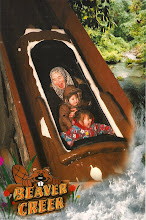The lesson fit
Previous lesson- Introduction to Employment .
1. Group discussion: why do students choose to work during their studies? What are the challenges?
2. Vocabulary development- Occupations. Activities: a) match the occupation on the left with the job description on the right b) write the occupation beside the description
3. Reading. Group work. Read ‘position desired’ section from three different application packs in three groups and decide what occupation they are recruiting for
4. Writing. Write a description to three the most prestigious occupations in your home country.
5. Form focus. Teacher goes round and helps students with constructing their thoughts and sentences while students writing. Individual questions can be answered at this time.
6. Students report back to class. Teacher gives feedback.
7. Teacher recaps the lesson and gives homework.
Following lesson- Employment terms and application forms
1. Pair- work task. Information- gap. Two students each have the same application form but some information is missing from each. Complete the form by asking each other question. Ex. What is the applicant’ surname? Is the applicant male/female?
2. Vocabulary development- application forms. Match the expressions on the left with the correct meaning on the right.
3. Reading. Group work. Read three different application packages in three groups and find at least 15 common employment terms.
4. Writing. Text repair on Word processor. Vocabulary review of employment terms
5. Form focus. Teacher goes round and helps students with repairing the employment contextualized text. Individual questions can be answered at this time.
6. Teacher presents ‘broken text’ on smartboard. Students report what correction they have made. Collaborative feedback with comments by students and teacher
7. Teacher recaps the main points and gives homework.
Lesson Plan: Personal qualities and ‘Help Wanted’ ads
Aims and Objectives:
Ø To develop students’ understanding of ‘personal qualities’ descriptions in job ads
Ø To develop students’ understanding of ‘Help Wanted’ ads in newspapers
Ø To teach new words related to ‘personal qualities and employment’
Ø To teach abbreviations in ‘Help Wanted’ ads
Ø To provide an opportunity in class for meaningful communication
Stages
Stage 1. Pretask. Pair-work: Vocabulary matching activity. Appendix 1, section A. Duration: 15 minutes.
T tries to elicit vocabulary from the Ss by asking them about qualities they think are important for certain jobs and why. Many words on the sheet may be new for the Ss. Therefore, the matching exercise has been divided into groups of four to be completed in pairs of six. Each pair will share answers with the class. T will verify the answers; explain the meaning with more examples if necessary.
Stage 2. The task. Pair-work: discussion and writing. Appendix 1, section B. Duration: 15 minutes.
T asks Ss to complete exercise B. Ss discuss ideas and write a note to report orally to the whole class.
Stage 3. Planning and report. Form focus. Duration: 30 minutes.
Ss draft and rehearse what they want to say while T goes around to advice Ss on language, suggesting phrases and helping Ss correct their language. T asks groups to report briefly to the whole class so everyone can compare findings. T comments on the content; rephrase expressions but no overt public correction.
Stage 5. Abbreviations found in the ‘Help Wanted’ ads. Appendix 3. Duration: 15 minutes
T explains local newspapers do not use sentences but rather shortened forms and abbreviations. T explains the different ways abbreviations are made and give several examples. Ss take turns to read the words aloud. T monitors pronunciation and checks for comprehension.
Stage 6. Reading. Appendix 4, section A. Duration 10 minutes
Ss will read the text for ads and discuss the questions in Section A in pairs. T monitors the language and advices if necessary.
Stage 7. Recap and homework. Duration 5 minutes. T explains the homework: Appendix 5 and section B in Appendix 4.
